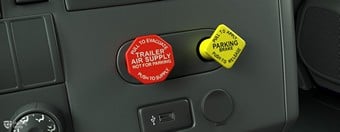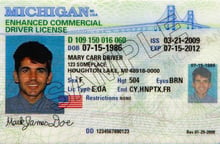Perfect for first-time and renewal CDL/CLP applicants, and those adding endorsements. In the great state of Michigan, there should be plenty of work for drivers of combination vehicles, such as semi-trucks and tractor-trailers. Michigan has long been the home of the “Big Three” automobile manufacturers, and it also manufactures products in aerospace. However, its economy has diversified in recent decades. The state is now also home to a thriving high-tech economic sector. Truckers transport equipment and materials to many of these businesses and transport their finished products. Michigan has a significant agricultural industry, producing a wide variety of products such as milk, corn, soybeans, blueberries, and tart cherries, among many others. Truckers transport these products to distribution centers, processing plants, and markets. Finally, the state’s proximity to Canada creates a demand for truckers in cross-border trade.
Major commercial routes include Interstate 69 (used in cross-border trade and freight transport between the Midwest and Canada), Interstate 75 (heavily used for automotive and industrial freight), and Interstate 96 and U.S. Route 23 (both used for regional freight transport).
To drive combination vehicles, you’ll have to pass more than one official knowledge test. To obtain any class of CDL, you must pass the General Knowledge test on general commercial driving theory. But to be qualified to drive combination vehicles, you’ll also have to pass the Combination Vehicles knowledge test on the theory of driving combination vehicles. You’ve probably been urged to study the official Michigan Commercial Driver’s Study Guide (Michigan CDL Handbook 2025), especially Section 6 (Combination Vehicles), because the official Combination Vehicles knowledge test is based on this official study guide. However, are you looking for some more help to pass the knowledge test than you’re getting from the manual? Good news: You’ve come to the right place! We’ve already helped many aspiring commercial drivers, and we can help you too.
This free Michigan CDL Combination practice test, one of several we offer, is based on the official state commercial driving manual, just like the official knowledge test. It’s up to date as of December, 2025. There are 25 multiple-choice questions and answers on such topics as combination braking systems, combination driving techniques, coupling and uncoupling, and vehicle inspections. However, unlike the official knowledge test, this practice test comes with our automated assistant, which can help you with a question by supplying a hint and an explanation of the correct answer. There is no time limit. Take your time and learn as much as you can. Try to look up the answer to a puzzling question in the official study guide before proceeding with the rest of the test.














